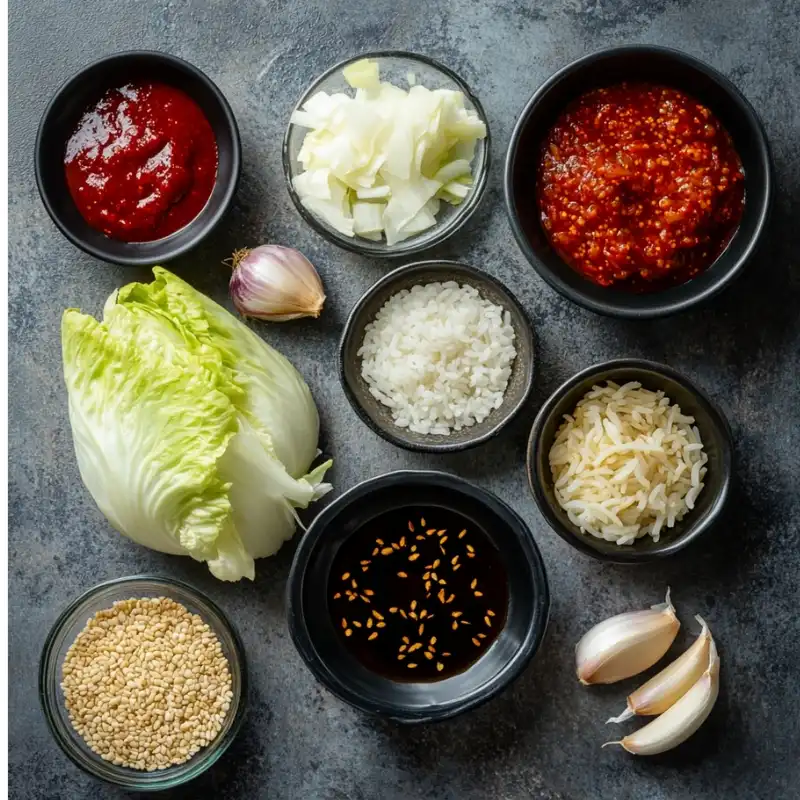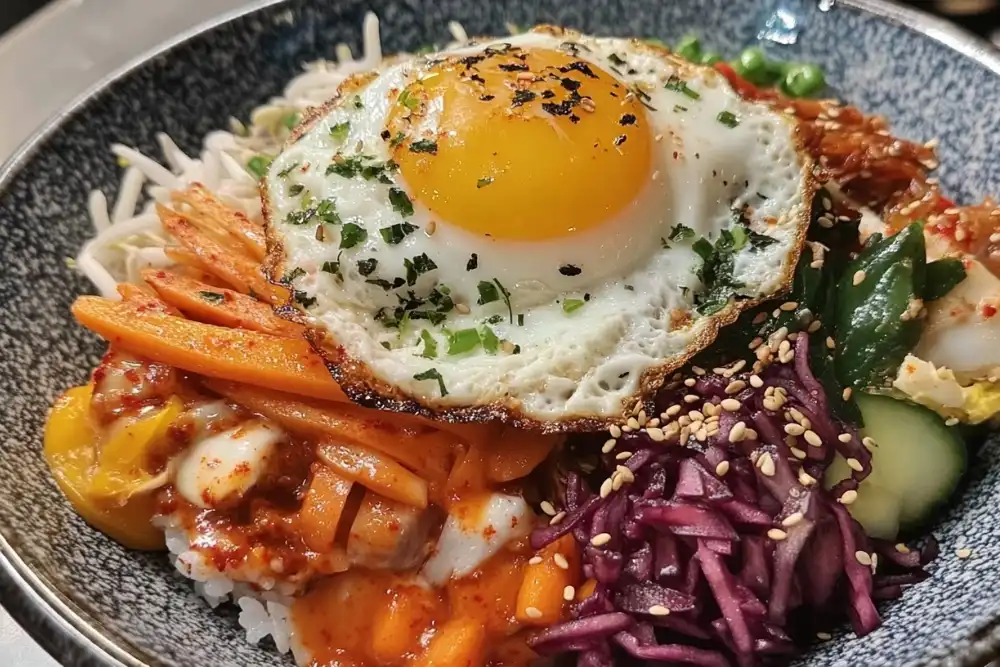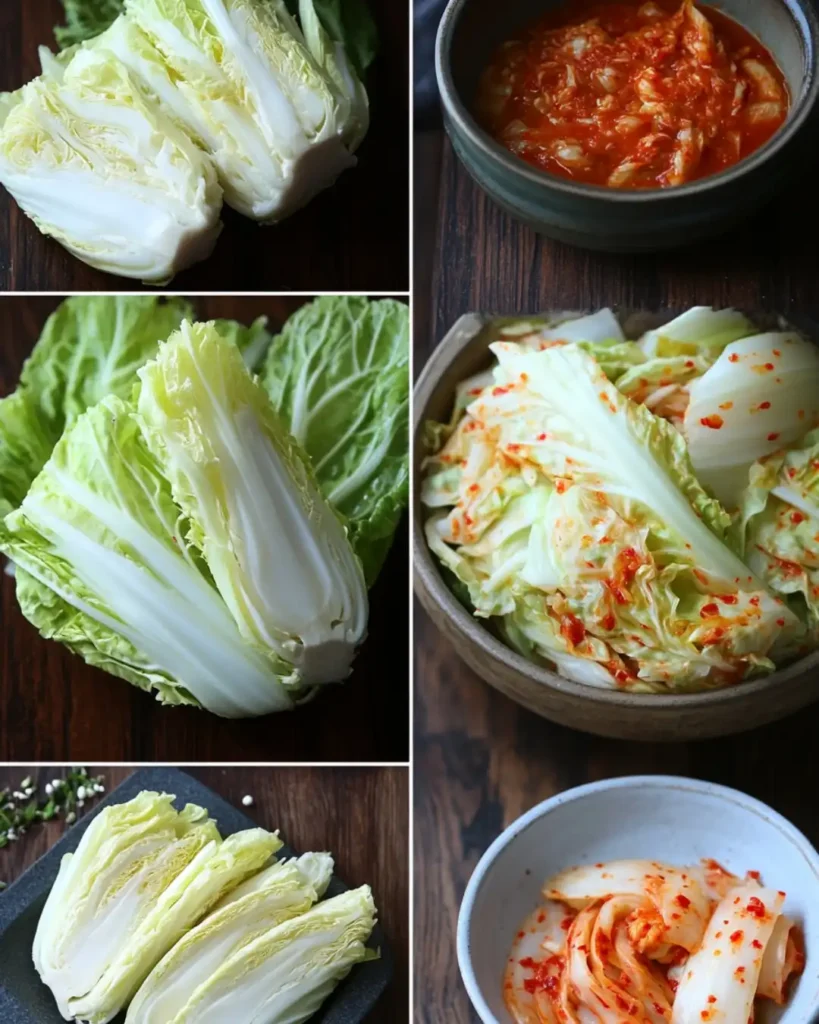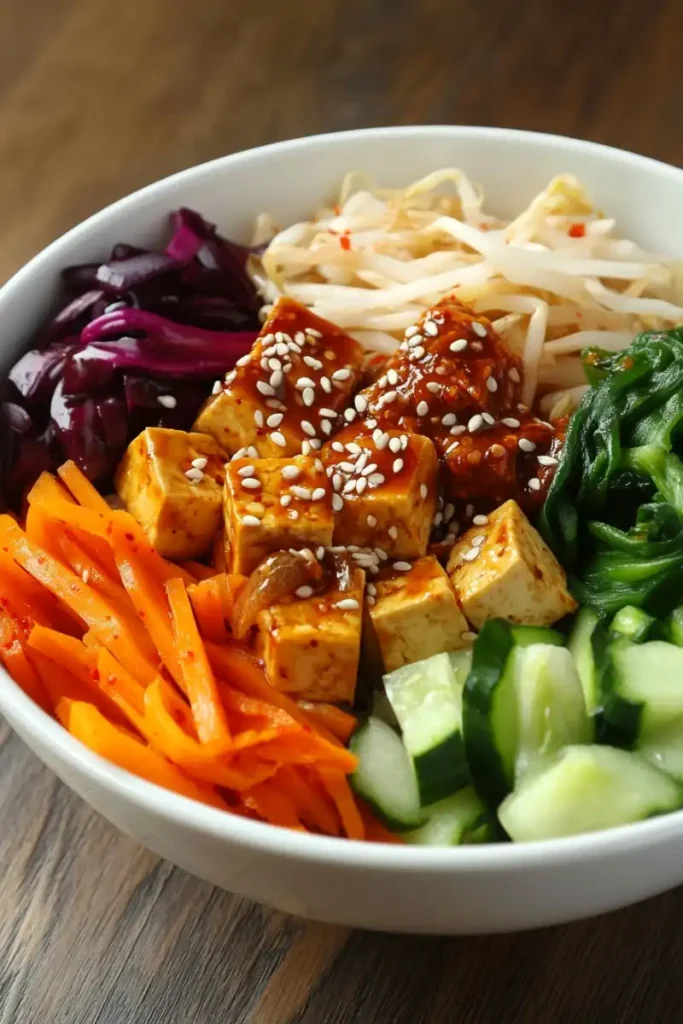Welcome to the world of Korean recipes! Here, you’ll find how authentic Korean recipes can change your cooking. They bring vibrant flavors and healthy ingredients to your kitchen. Korean food is complex but easy recipes make it simple to enjoy.
You’ll learn about popular Korean dishes that show the variety of this rich food tradition. Get ready for a taste adventure. Making these dishes will be fun and rewarding!
Introduction to Korean Cuisine
Korean cuisine is a mix of flavors and traditions. It’s known for its unique spices and cooking ways. These dishes are both tasty and good for you.
Exploring Korean flavors opens up new culinary adventures. It invites you to try traditional Korean dishes at home.
The Essence of Korean Flavors
Korean food balances sweet, sour, salty, and spicy tastes. Each dish has its own story, shaped by local ingredients and cooking methods. Fermenting adds flavor and health benefits.
This mix of tastes makes every meal unforgettable.
Key Ingredients in Korean Cooking

To make authentic Korean dishes at home, know the key ingredients. Gochujang, a spicy chili paste, and doenjang, a fermented soybean paste, add depth. Sesame oil brings a nutty flavor, while garlic and ginger enhance the aroma and taste.
Collecting these ingredients will bring the vibrant essence of Korean cuisine to your table.
Popular Korean Dishes to Try
Korean food is full of exciting flavors and textures. It attracts both new and experienced food lovers. You’ll find dishes with bright colors and strong tastes. Here are three iconic Korean dishes to try at home.
Bibimbap: A Colorful Mixed Rice Bowl

Bibimbap is loved for its beautiful look and healthy ingredients. It has a mix of veggies, protein, and a fried egg, all with gochujang (Korean chili paste). It’s not just pretty; it’s also very nutritious.
Kimchi: The Iconic Korean Side Dish
Kimchi is a must-mention in Korean food. It’s made from fermented veggies like napa cabbage and radishes. It adds a spicy touch and health benefits to any meal.
Bulgogi: Sweet and Savory Marinated Beef
Bulgogi is a favorite for its sweet and savory taste. It’s marinated beef grilled to perfection. Served with rice or in lettuce, it’s a great way to experience Korean flavors.
If you love the rich, marinated flavors of bulgogi, you might also enjoy exploring other slow-cooked, deeply seasoned meats. A great example is birria tacos, a popular Mexican dish with tender, flavorful beef. Check out this Ultimate Birria Tacos Recipe Guide to discover another way to enjoy delicious marinated meat!
For those interested in mastering Korean BBQ techniques, Maangchi’s Guide to Korean BBQ offers expert tips on grilling meat to perfection, including how to use traditional marinades and cooking methods.
Essential Korean Cooking Techniques
Learning Korean cooking techniques can make your dishes better. Two key methods are fermentation and stir-frying. These techniques add unique flavors and textures to your meals.
Fermentation: A Key to Flavor
Fermentation is key in Korean food for its rich flavors and health benefits. It turns vegetables and grains into tangy, complex foods. Kimchi, made from cabbage and spices, is a great example.
This process takes time, but it’s worth it. A few ingredients can create bold flavors. These flavors are great with many dishes or on their own.
Fermented foods play a vital role in Korean cuisine, with kimchi being the most well-known example. If you enjoy making fermented foods at home, you might also like trying your hand at homemade yogurt. Check out this Instant Pot Yogurt Recipe for an easy way to incorporate more probiotics into your diet!
Stir-Frying: Quick and Delicious
Stir-frying in Korean cooking is fast and flexible. It uses a hot pan or wok to cook quickly. This keeps vegetables and proteins fresh and flavorful.
Use colorful veggies like bell peppers and zucchini with your favorite meats or tofu. Sesame oil and soy sauce add depth. Learning stir-frying makes meals quicker and lets you try new flavors.
Easy Korean Recipes for Beginners
Exploring Korean cooking can be fun and rewarding. Start with these easy Korean recipes. They’re perfect for beginners, using simple ingredients and techniques. You’ll love the vibrant flavors of Korea.
Simple Kimchi Recipe

A simple kimchi recipe is a great way to learn about fermentation. It uses Napa cabbage, Korean red pepper flakes, garlic, and fish sauce. It’s easy to make and tastes amazing.
Quick Bibimbap
Quick bibimbap is a colorful and tasty dish. It has vegetables, a fried egg, and rice with spicy gochujang. It’s a quick and filling meal that tastes like traditional bibimbap.
One-Pot Korean Jjigae
Try one-pot Korean jjigae for a hearty stew. It has tofu, mushrooms, and vegetables in a rich broth. It’s a convenient and satisfying meal for a cozy dinner.
| Recipe | Main Ingredients | Preparation Time | Difficulty Level |
|---|---|---|---|
| Simple Kimchi | Napa cabbage, Korean red pepper flakes, garlic, fish sauce | 30 minutes | Easy |
| Quick Bibimbap | Rice, assorted vegetables, egg, gochujang | 20 minutes | Easy |
| One-Pot Korean Jjigae | Tofu, mushrooms, vegetables, broth | 40 minutes | Easy |
These recipes make cooking Korean food easy and fun. Start with simple kimchi and then try quick bibimbap and one-pot Korean jjigae. You’ll impress yourself and your family with these tasty dishes.
Healthy Korean Ingredients to Use
Korean food is known for its bright flavors and health benefits. It uses healthy Korean ingredients for taste and nutrition. Adding whole grains and fresh vegetables makes Korean dishes even better.
Whole Grains: Brown Rice and Barley
Whole grains are key in Korean meals. Brown rice is a healthier choice than white rice. It has more fiber and vitamins.
Barley adds a nice nutty taste and helps with digestion. Here’s a quick look at their benefits:
| Whole Grain | Nutritional Benefits | Cooking Tips |
|---|---|---|
| Brown Rice | High in fiber, magnesium, and antioxidants | Soak before cooking for softer texture |
| Barley | Rich in beta-glucans, which support heart health | Try in soups or as a hearty salad base |
Fresh Vegetables: Seasonal Favorites
Fresh vegetables add color, texture, and nutrients to Korean dishes. Favorites like napa cabbage, spinach, and radishes are key in kimchi and bibimbap. Picking ripe, seasonal veggies ensures the best taste and nutrition.
- Choose local farmers’ markets for the freshest options.
- Look for vibrant colors and firm textures to select the best produce.
- Incorporate a variety of vegetables to enhance both flavor and health benefits.
Using these healthy Korean ingredients in your cooking makes meals delicious and nutritious. It celebrates the heart of Korean cuisine.
For those looking to explore healthy and versatile protein options beyond traditional Korean dishes, ground chicken is a fantastic ingredient. It’s lean, adaptable, and works well in many recipes. If you’re interested in incorporating more ground chicken into your meals, take a look at these Delicious and Easy Ground Chicken Recipes for some fresh ideas!
Festive Korean Dishes for Special Occasions

Korean cuisine is full of traditions, and celebrations are no exception. Festive Korean dishes are the stars of special gatherings, highlighting the country’s rich culinary heritage. Tteokguk and Japchae are two traditional recipes that are perfect for any celebration. They offer delicious flavors and carry deep cultural meaning, making them ideal for your next festive event.
Tteokguk: Rice Cake Soup for the New Year
Tteokguk is a comforting rice cake soup enjoyed during Korea’s New Year. It features thin rice cakes in a savory broth, topped with egg, green onions, and sometimes beef. Eating Tteokguk is believed to bring good fortune and mark a year of life. It’s a dish that warms the heart and brings people together, celebrating community and family.
Japchae: Sweet Potato Noodle Stir-Fry
Japchae is a festive Korean dish known for its vibrant colors and rich flavors. It’s a stir-fry of sweet potato noodles with vegetables like bell peppers, spinach, and carrots. Soy sauce and sesame oil add a perfect balance of taste. Japchae is a favorite at birthdays, weddings, and other celebrations, embodying unity and prosperity. Its cheerful look and tasty flavor make it a must-have for any festive occasion.
| Dish | Main Ingredients | Occasions Served | Cultural Significance |
|---|---|---|---|
| Tteokguk | Rice cakes, beef, green onions, eggs | New Year’s celebrations | Symbolizes gaining a year of life and good fortune |
| Japchae | Sweet potato noodles, vegetables, soy sauce, sesame oil | Birthdays, weddings, celebrations | Represents unity and prosperity |
Vegetarian and Vegan Korean Recipes
Exploring vegetarian Korean recipes opens up a vibrant world of flavors. Korean cuisine offers delightful plant-based options for both vegan and vegetarian diets. Let’s dive into some delicious vegan Korean dishes that capture the essence of plant-based Korean cuisine.
Vegan Kimchi: A Plant-Based Twist

Kimchi, the iconic Korean side dish, can be easily adapted into a vegan version. Traditional kimchi includes fish sauce, but switching to vegetable-based alternatives keeps the spicy and tangy flavor. You can use ingredients like:
- Napa cabbage
- Radishes
- Garlic
- Ginger
- Red pepper flakes
- Vegan-friendly soy sauce
This vegan kimchi shows how to enjoy traditional flavors on a plant-based diet. It pairs well with rice or as a topping for various dishes.
Tofu Bibimbap: For a Healthy Alternative
Tofu bibimbap is a nourishing twist on the classic bibimbap. It’s perfect for those looking for vegetarian Korean recipes. This dish combines colorful vegetables with marinated tofu, making it a nutrient-rich meal. Key ingredients include:
- Cooked brown rice or quinoa
- Assorted vegetables (spinach, carrots, zucchini)
- Pan-fried tofu
- Sesame oil
- Gochujang (Korean chili paste)
This delicious bowl offers a balanced mix of flavors and textures. It’s not only filling but also appealing. The fresh vegetables and tofu provide a variety of nutrients, showing the benefits of plant-based Korean cuisine.
| Dish | Main Ingredients | Dietary Aspect |
|---|---|---|
| Vegan Kimchi | Napa cabbage, radishes, garlic, ginger, red pepper flakes | Vegan |
| Tofu Bibimbap | Brown rice, assorted vegetables, pan-fried tofu, sesame oil | Vegetarian |
These recipes show how vegetarian and vegan adaptations can create delicious meals. Enjoying these dishes lets you enjoy the rich flavors of Korean cuisine while staying plant-based.
Creating a Korean Meal Plan
Starting a Korean meal plan can make cooking fun and rewarding. It helps you eat well and enjoy tasty food. You’ll learn to mix different Korean recipes into your meals. This guide will help you plan a week of tasty dishes and show you how to shop for Korean ingredients.
Planning for a Week of Korean Dishes
Start by picking dishes you like that offer variety. Here’s a simple plan for your week:
- Monday: Bibimbap with seasonal vegetables and egg
- Tuesday: Spicy Kimchi Jjigae (stew)
- Wednesday: Bulgogi with brown rice
- Thursday: Japchae (sweet potato noodles) with vegetables
- Friday: Grilled mackerel with a side of pickled radish
- Saturday: Tofu stir-fry with garlic and greens
- Sunday: Homemade Kimchi with white rice
This plan offers a mix of flavors and textures all week. Each dish will teach you new cooking skills and deepen your love for Korean food.
Tips for Shopping Korean Ingredients
Shopping for Korean ingredients is an exciting journey. Here are some tips to help:
- Visit local Asian grocery stores for fresh produce and authentic items.
- Look for online retailers specializing in Korean ingredients for unique items.
- Read labels carefully to ensure authenticity, focusing on brands like Sempio and Chung Jung One.
- Stock up on pantry staples such as gochujang, sesame oil, and soy sauce.
- When shopping, ask the staff for recommendations on lesser-known ingredients.
Follow these tips to find fresh ingredients for your Korean meals. It will make exploring these recipes both enjoyable and delicious.
Conclusion: Bringing Korean Flavors to Your Home
Reflecting on your journey with Korean recipes, you see it’s more than just cooking. It’s about diving into a vibrant culture through food. Every dish you try brings you closer to Korean traditions. From bibimbap’s savory comfort to kimchi’s delightful crunch, these flavors can make your meals exciting.
Your Journey with Korean Recipes
Your journey with Korean recipes is an exciting adventure. It opens doors to new spices and techniques. Don’t be afraid to add your own twist to classic dishes. Whether you’re a pro or a beginner, cooking Korean recipes at home is rewarding. Celebrate your kitchen successes and find new favorites!
Encouragement to Experiment and Enjoy!
As you explore Korean cuisine, feel free to experiment. Taste, adjust, and enjoy making dishes that show your taste. Each meal is a chance to try new flavors. By making Korean dishes a part of your home, you’re not just eating. You’re connecting with a rich culinary tradition.

